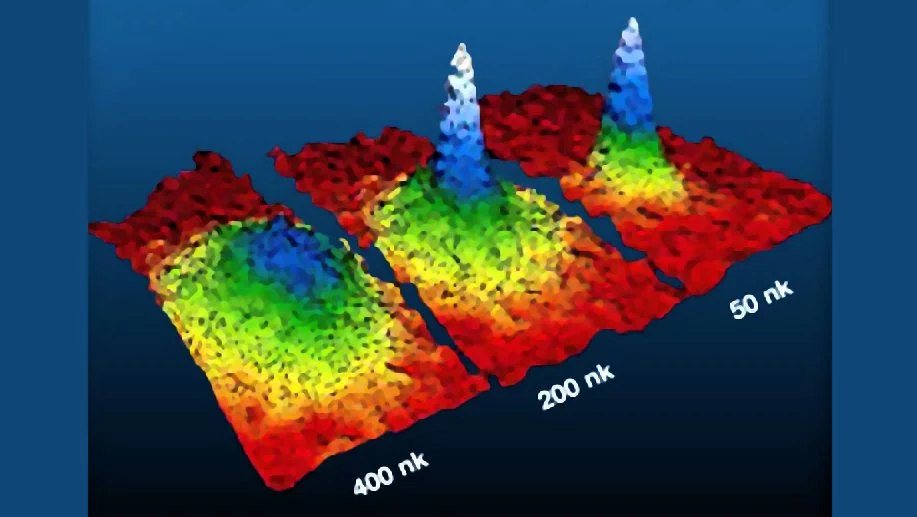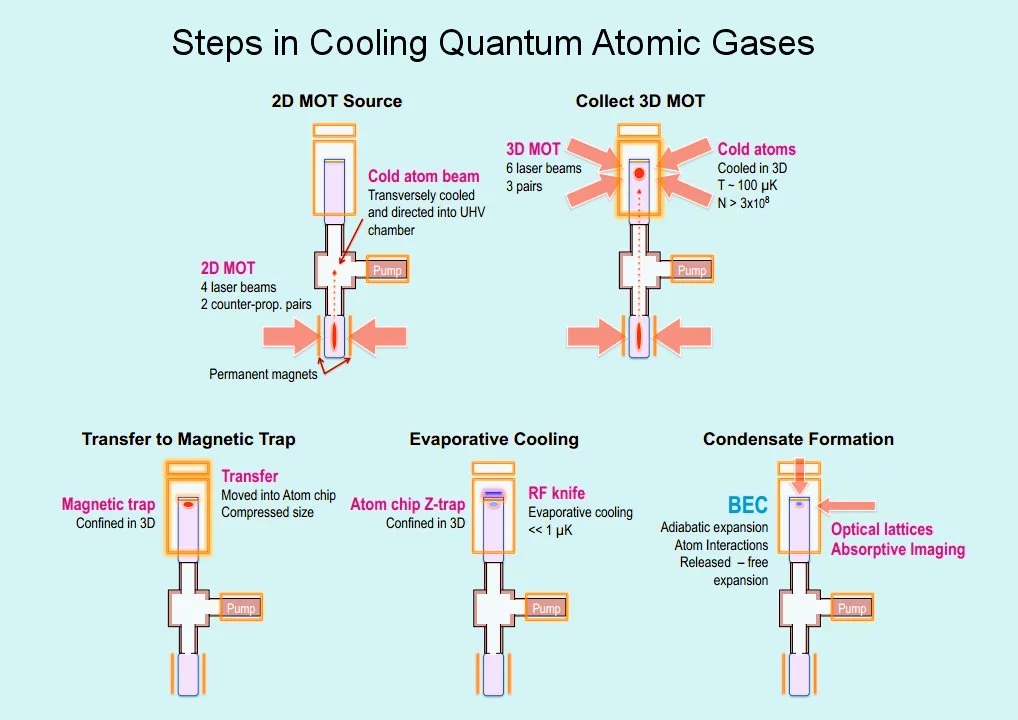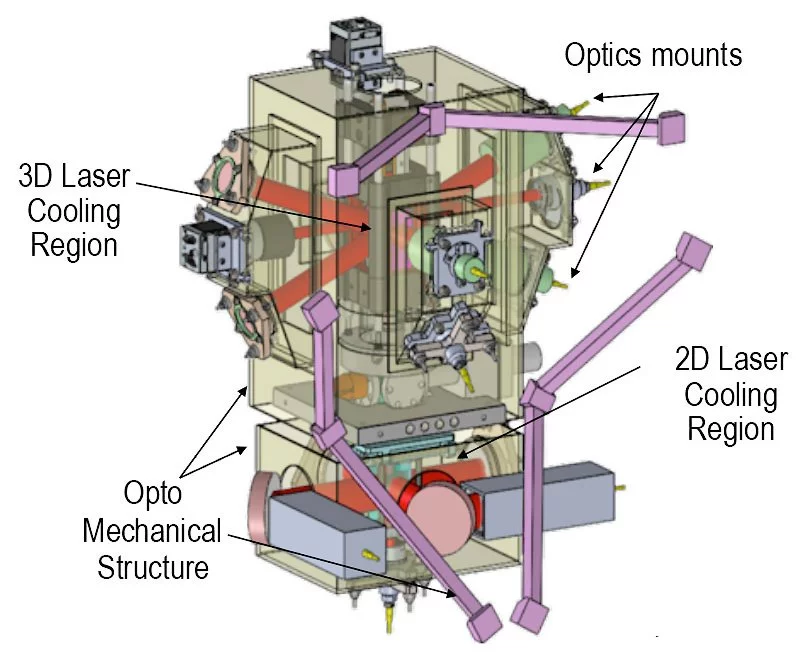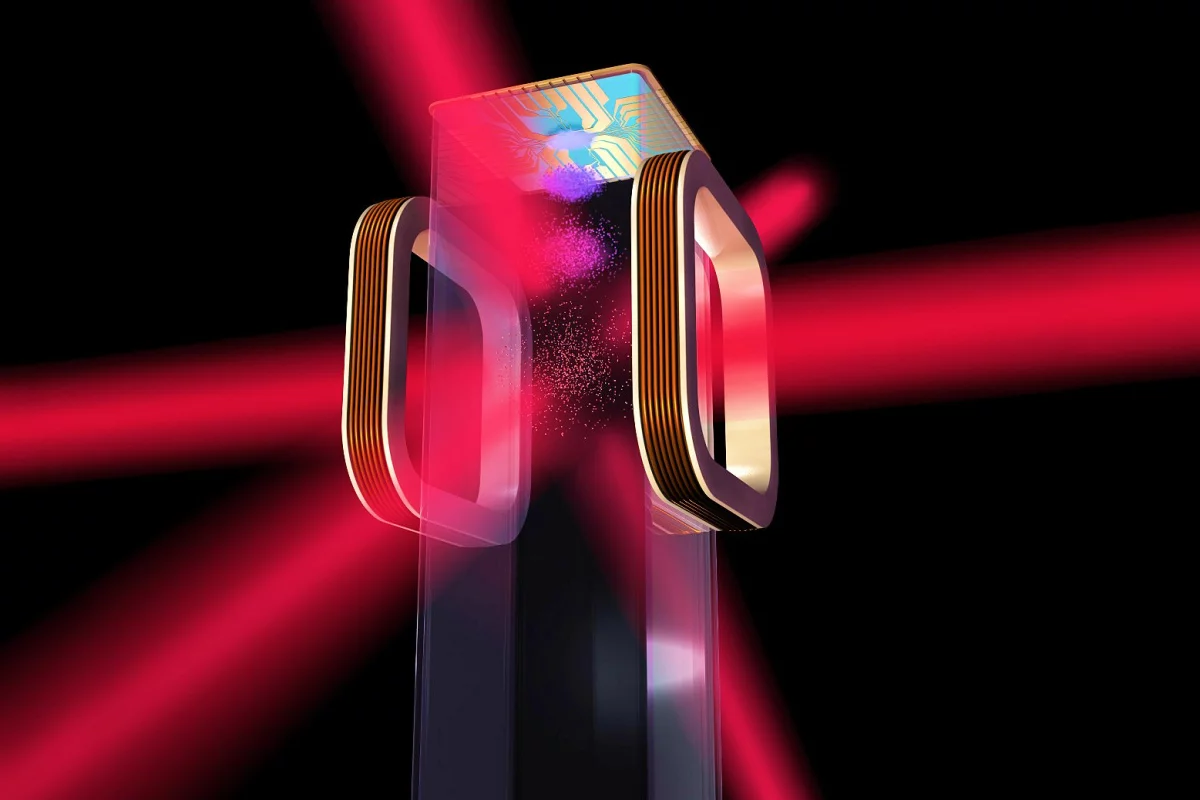Quantum physics likes the cold. In particular, macroscopic quantum phenomena such as superconductivity, superfluidity, and Bose-Einstein condensates (BECs) are only found at quite low temperatures. While current refrigeration methods can attain temperatures of a few nK (nanoKelvin), attaining still lower temperatures is largely prevented by the need to support the cooling matter against the pull of Earth's gravity. Now NASA's Cold Atom Lab, scheduled for installation on the ISS in 2016, will aim for temperatures roughly three orders of magnitude smaller.
Shedding light on the nature of quantum matter (forms of matter in which some macroscopic properties are dominated by quantum mechanics) has been a major theme of the past half-century in physics, having collected nine Nobel Prizes shared among 23 Laureates in that period. Examples include superconductivity, superfluidity, the fractional quantum Hall effect, and Bose-Einstein condensates.
Presumably new and unexpected quantum effects remain to be discovered at colder temperatures. In particular, experiments with a quieter background are more likely to provide data which can reveal tiny effects normally overshadowed by thermal noise. The potential exists to obtain clues to the nature of space and time, quantum entanglement, the Equivalence Principle, and other issues with which we still struggle.
A range of novel applications are also within reach, such as quantum sensors based on atomic matter-wave interferometry, in which the wave nature of atoms is so enhanced owing to the low experimental temperatures that they can be split and made to interfere with themselves.
How can extreme cold be understood? In the Kelvin temperature scale, zero temperature is absolute zero, the point at which all classical motion stops. The temperature change associated with one degree Kelvin is equal to that of one degree Centigrade.
There are markers on the path to ultracold temperatures. Dry ice has a temperature of 195 K, liquid nitrogen boils at 77 K, and helium becomes liquid at 4.2 K. The cosmic microwave background of the Universe corresponds to 2.725 K, and the coldest known natural place in the Universe, the Boomerang nebula, is a chilly 1 K.
The markers are nice, but matter at a temperature of 1 pK (picoKelvin) is a trillion times colder than the Boomerang nebula; a huge leap over which to get a feel for truly extreme cold. One approach is to look at the de Broglie wavelength (roughly the quantum size) of an atom in a cold gas.
At room temperature a mid-weight atom has a wavelength of about 0.02 nm, which is about 10 times smaller than the physical size of the atom. The discrepancy in sizes explains why atomic gases show essentially no quantum nature at room temperature. At 1 K, the wavelength is about 0.3 nm, a bit larger than the separation of atoms in a liquid, and indeed one sees quantum mechanical superfluid helium appearing at roughly this temperature.
At a picoKelvin, however, the wavelength is roughly 0.3 mm, about the size of a medium grain of sand, and vastly larger than the classical size of the atoms. When the quantum waves of the individual atoms in a gas overlap, the system becomes dominated by quantum effects; in the case of an atomic gas made of bosons, you get a Bose-Einstein condensate.

The quantum correlations from which properties of ultracold matter emerge are usually rather weak, and easily disrupted by thermal fluctuations, thereby preventing a condensed quantum phase from forming. As a result, quantum properties usually appear at lower temperatures, as shown in the figure above of the formation of a Bose-Einstein condensate as temperature of an atomic gas is reduced.

The lowest temperature experiments at present are those involving quantum atomic gases. To carry out such experiments requires the capability to trap, cool, and examine a collection of individual atoms. Unfortunately, atom traps degrade both the ultimate temperature that can be achieved and the uniformity of the trapped system.
Today's state-of-the-art atom traps are based on gravitomagnetic balance. Diamagnetic atoms are repelled from magnetic fields, so that when placed in a magnetic field gradient, the atoms will sink to a level where the upward force from the magnetic interaction just balances the pull of gravity. A gravitomagnetic trap is also designed so that the magnetic field is smaller in the center of the trap than at the edges, so that the atoms are also confined in the horizontal plane.
It is clear that the magnetic interactions of the various atoms in such a trap are not uniform, especially when defects in the production and operation of the trap magnets are taken into account. As a result, any system being studied is not the uniform material usually assumed to make analysis of its properties easier. In addition, any fluctuations or other changes in the magnetic field will tend to make the trapped atoms move faster, which is equivalent to an increase in temperature. Because of such effects, the lowest temperature reached to date in a quantum atomic gas is about 0.45 nK, in a tour-de-force experiment carried out at MIT.
NASA's Cold Atom Lab is intended to break the temperature barrier, offering the chance to carry out experiments on quantum gases at temperatures as low as a few pK (picoKelvin). NASA asked a seemingly stupid question: Why do we need a trap for ultracold experiments on atomic gases?
This question illuminated a fundamental turning point. If the atoms are sufficiently cold, maybe trapping isn't needed. A typical experimental sample of trapped atoms is a few mm on a side. With a sample temperature of 1 K, untrapped atoms would escape from the sample volume in well under a millisecond, nowhere near enough time to carry out the desired experiments. At 1 nK, however, atoms would remain in the experimental volume for around five seconds. At 1 pK, the typical escape period would be more like three minutes, even ignoring any interactions between the atoms. Highly accurate and meaningful experiments can easily be carried out in a handful of seconds, making trapping the atoms within the active volume of the experiment needless.
While there may not be much need to trap atoms at the lowest temperatures (leaving the option of using a trap in between experiments), there is still gravity to deal with. On Earth, the atoms would fall away from the experimental sample volume within 25 milliseconds or so. The atoms would also gain very large amounts of kinetic energy compared to their thermal movements as they fall, leading to a rather confusing experiment.
The solution for lower temperatures? Put the quantum atomic gas laboratory into orbit. At sufficiently low temperatures traps are not needed, and neither is a device to support the atoms against gravity.

The result is NASA's imaginatively named Cold Atom Lab, which will be launched to be installed in the International Space Station in 2016. One of the few science experiments which requires the specialized environment and infrastructure of the ISS, the Cold Atom Lab will pioneer new techniques for analyzing, controlling, and utilizing novel ultracold quantum phenomena. These new capabilities will shed more light on known ultracold phenomena, such as matter-wave interferometry and Bose-Einstein condensates. Also, folklore reports that many surprises lurk in the dark and the cold.
Source: NASA




